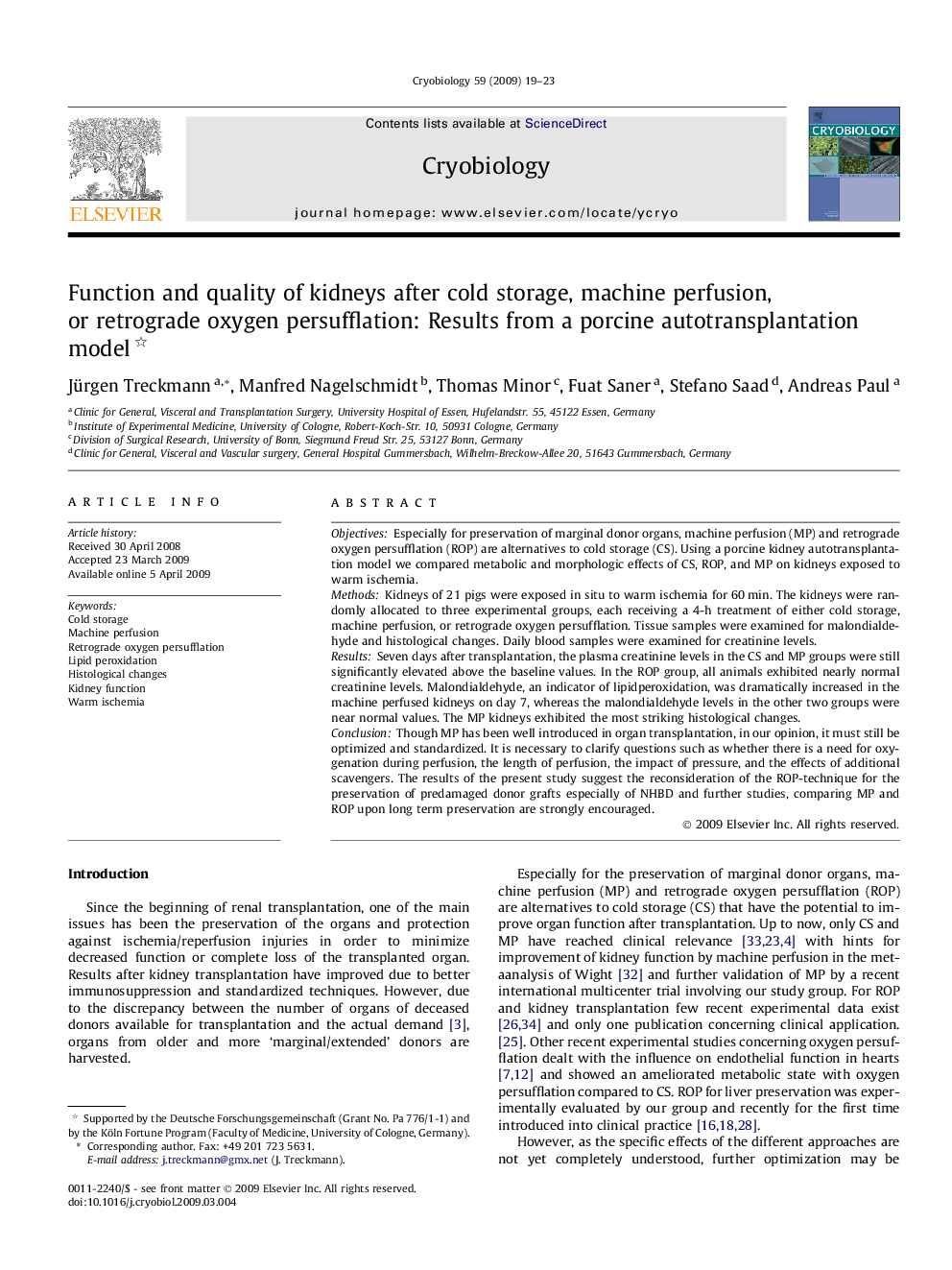| Article ID | Journal | Published Year | Pages | File Type |
|---|---|---|---|---|
| 2168844 | Cryobiology | 2009 | 5 Pages |
ObjectivesEspecially for preservation of marginal donor organs, machine perfusion (MP) and retrograde oxygen persufflation (ROP) are alternatives to cold storage (CS). Using a porcine kidney autotransplantation model we compared metabolic and morphologic effects of CS, ROP, and MP on kidneys exposed to warm ischemia.MethodsKidneys of 21 pigs were exposed in situ to warm ischemia for 60 min. The kidneys were randomly allocated to three experimental groups, each receiving a 4-h treatment of either cold storage, machine perfusion, or retrograde oxygen persufflation. Tissue samples were examined for malondialdehyde and histological changes. Daily blood samples were examined for creatinine levels.ResultsSeven days after transplantation, the plasma creatinine levels in the CS and MP groups were still significantly elevated above the baseline values. In the ROP group, all animals exhibited nearly normal creatinine levels. Malondialdehyde, an indicator of lipidperoxidation, was dramatically increased in the machine perfused kidneys on day 7, whereas the malondialdehyde levels in the other two groups were near normal values. The MP kidneys exhibited the most striking histological changes.ConclusionThough MP has been well introduced in organ transplantation, in our opinion, it must still be optimized and standardized. It is necessary to clarify questions such as whether there is a need for oxygenation during perfusion, the length of perfusion, the impact of pressure, and the effects of additional scavengers. The results of the present study suggest the reconsideration of the ROP-technique for the preservation of predamaged donor grafts especially of NHBD and further studies, comparing MP and ROP upon long term preservation are strongly encouraged.
